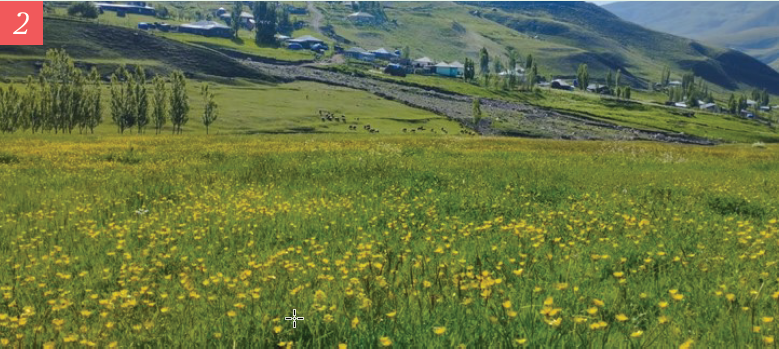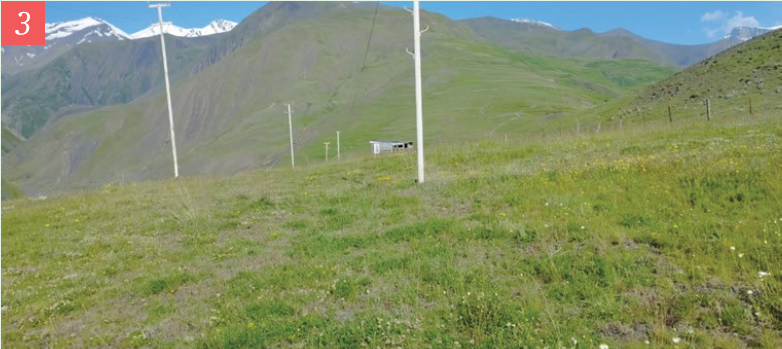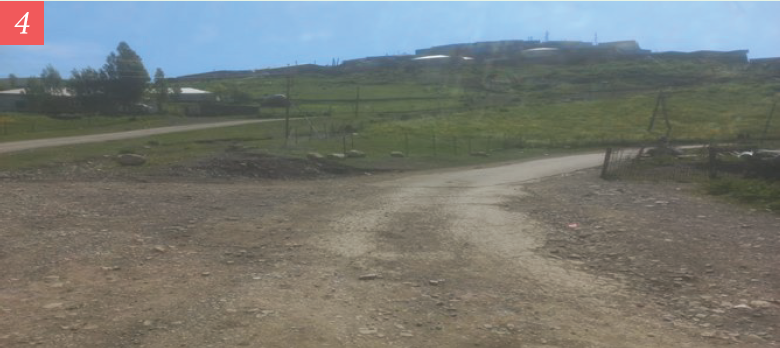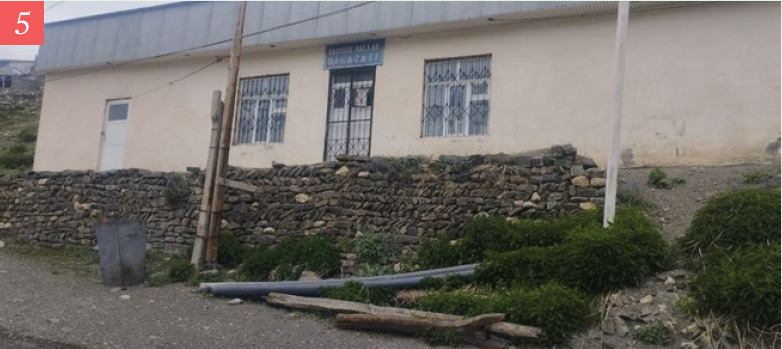The World Heritage Site encompasses the village of Khinalig, the surrounding yaylaqs – summer pastures (Quba and Qusar) and qishlaqs – winter pastures in Central Aran region, as well as the 200-km-long historical Köç yolu – Transhumance route (Quba, Shamakhi, Qobustan) between them.
The World Heritage Site lies in the territory of 6 administrative districts covering a massive cultural landscape of 44,829.41 hectares (nearly 45 thousand hectares) of World Heritage and 109,392.78 hectares (over 109 thousand hectares) of buffer zone.
The territory inscribed at the World Heritage list features many historical cemeteries, sacred places, shrines, historical bridges, springs and other tangible cultural elements that belong to people practicing transhumance way of life.
‘KHINALIG AND KÖÇ YOLU’ STATE HISTORICAL, CULTURAL AND ETHNOGRAPHIC RESERVE
"Khinalig and Köç Yolu" State Historical, Cultural and Ethnographic Reserve, was established by an order of the President of the Republic of Azerbaijan on 4 September 2023. According to the measure, the necessary funding required for the activities of the reserve will be provided from the state budget of the Republic of Azerbaijan to the State Tourism Agency.
The main activities of STA are to exercise state oversight across the reserve’s territory, to ensure the protection and inviolability of historical and cultural sites, its sustainable development and the preservation of the natural landscape.
According to a draft decision of the Cabinet of Ministers ‘On the approval of the division of immovable historical and cultural monuments taken under state protection on the territory of the Republic of Azerbaijan according to their importance’, Khinalig village is protected by the state as a site of global importance.
The territory of ‘Khinalig and Köç Yolu Transhumance Route’ State Historical, Cultural and Ethnographic Reserve includes the territory of the former Khinalig State Historical, Architectural and Ethnographic Reserve and the territory of the traditional migration route passing through six administrative districts of Azerbaijan.
Khinalig mountain village is located 60 km from Guba and 3.5 hours from Baku, the capital of Azerbaijan. At an altitude of 2,200 metres above sea-level, Khinalig is one of the highest settlements in Europe. Beginning at the village and ending at Pirsaat Reservoir, the migration route is more than 200 kilometres long, passing through the districts of Gusar, Guba, Shamakhi, Gobustan, Absheron and Hajigabul.
‘Khinalig and Köç Yolu Transhumance Route’ State Historical, Cultural and Ethnographic Reserve is an example of cultural heritage distinguished by its unique architectural style and geographical expanse. In the village of Khinalig, repair and restoration work is carried out by the State Tourism Agency, based on the protection and preservation of cultural heritage values.
Repair and restoration works at the receive are overseen by the Reserve Management Center of the State Tourism Agency. Before their work began, the book ‘Khinalig Restoration Instruction’ and the regeneration plan of the territory were produced, based on recommendations by the World Heritage Committee, prepared according to international standards.
DISCOVERY OF ANCIENT MANUSCRIPTS
During the repair and restoration of houses within the territory of Khinalig, ancient manuscripts and printed samples were discovered concealed within walls. Expert scholars meticulously deciphered the valuable documents, subsequently cataloguing and entrusting them to the reserve's museum collection.
RESEARCH INTO SOCK PATTERNS
Within Khinalig, extensive scientific research was conducted on the intricate art of sock knitting and traditional sock patterns. This research culminated in the categorisation of both ancient and contemporary sock designs, accompanied by the development of corresponding illustrations.
THE STUDY OF FOLKLORE
In 2021, the Folklore Institute of ANAS, with the generous support of the State Tourism Agency, embarked on an in-depth exploration of age-old and modern customs, ceremonial traditions, religious beliefs, oral folk literature, musical heritage and more, all practised by the Khinalig community. An extensive assortment of relevant materials and cultural artefacts was meticulously gathered during this research endeavour.
In 2023, three Azerbaijani oral folk literature tales were expertly translated into the ‘Khinalug’ language.
RESEARCH INTO THE POPULATION OF KHINALIG
The census records, originally conducted during select years of Tsarist Russia's rule in Khinalig, have been translated into Azerbaijani and comprehensively reanalysed. Leveraging materials from the State Historical Archive of the National Archives of the Republic of Azerbaijan, intriguing insights into the historical and ethnographic facets of Khinalig during the 19th century were gleaned.

‘TOP OF THE MOUNTAINS’ MUSIC FESTIVAL
From 6 to 8 September 2020, an extraordinary music festival unfolded within the ‘Khinalig and Köç Yolu Transhumance Route’ State Historical, Cultural and Ethnographic Reserve, as part of the ‘Top of the Mountains’ initiative. The festival featured captivating performances by musicians hailing from Azerbaijan, Georgia and Hungary, who also conducted master classes for local residents. In conjunction with the ‘Top of the Mountains’ project, organised by ‘VarYox’ culture and art centre, with the support of the State Tourism Agency's Reserves Management Center, a diverse array of activities was arranged.
These included a children's workshop, English language and theatre lessons, as well as captivating photography classes. Furthermore, a photography contest was held, with cameras being presented to the competition's participants. The photographs created for the contest are available for purchase. The local population also received instruction in crafting various ornaments and honed their communication skills with foreign tourists.
1. Potential Site for a Comfortable Hotel Complex with Panoramic Views:
 |
This area, with its wide vistas and serene natural surroundings, is ideal for the construction of a high-standard hotel complex. It offers the opportunity to combine luxury, comfort, and harmony with nature. |
2. Camping and Outdoor Experience Center for Adventure Seekers:
 |
This open natural space is perfect for tent camping, hiking trails, and nature-based activities. It could become a particularly attractive destination for eco-tourism and young travelers. |
3. Local Produce Presentation Area:
 |
A modern yet locally inspired coffee shop established here can serve as both a rest stop and a sales point for products made by local residents. Souvenirs and food products can be offered to match the tourist flow. |
4. Teahouse and Community Gathering Space Showcasing Local Culture:
 |
This area is designed to become a social hub where locals and tourists can interact. It is intended for a traditional teahouse and a community relaxation zone, and can be enriched with cultural events and village hospitality. |
5. Relax and Savor in Khinalig: Coffee Shop and Cozy Meeting Spot:
 |
A coffee shop concept featuring modern and aesthetic design can become an appealing gathering and rest space for both local and international tourists. It can stand out with open terraces, panoramic views, and a tranquil atmosphere. |